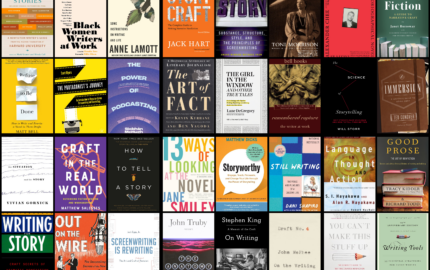
Not to be flippant, but my approach to teaching "the nut graf" is akin to U.S. Supreme Court Justice Potter Stewart's definition of obscenity: He knows it when he sees it.
So, after doing my best to describe the nut graf and its purpose in a story, I share with students six to eight examples of it being done well — how, in each example, the nut graf works in harmony with the lede and the supporting grafs that follow.
Otherwise, I draw from definitions I've collected from Chip Scanlan over the years, including from this 2019 Nieman Storyboard essay.
~ R.B. BRENNER Formerly metro and Sunday editor at the Washington Post who now teaches at Stanford University

You know who's really great at writing nut grafs? Songwriters. Think of it: Songwriters don't have all day to get their point across; they need to distill the point they're trying to make in less than three minutes, often sooner. The best are able to sketch out the universality of the human experience in just a few lines. A classic example is what Bruce Springsteen does in "The River" (the song is allegedly based on his sister's teen marriage). The song's intro, or "lede," sets the scene: I come from down in the valley/Where, mister, when you're young/They bring you up to do like your daddy done.
Here's the nut graf:
--Then I got Mary pregnant/And man, that was all she wrote
--And for my nineteenth birthday I got a union card and a wedding coat
In just 26 words, Springsteen tells you what the song is about —the dashing of hope. Those carefree days by the river — her body tan and wet down at the reservoir — are gone, forever. By the end of the song, the economy has soured, he and Mary barely talk, the river is dry. And the nut graf has led you there, beautifully.
~ LISA GRACE LEDNICER A night editor at the Washington Post who also teaches as an adjunct professor at the University of Maryland

I love rambling, late-night conversations as much as the next guy. But I can’t count the number of rambling stories I’ve written that fell apart like wet newsprint in the fluorescent light of morning.
Sigh. Deep breath. There’s more to do.
Go back and make it clear. Deal with the nagging questions: What’s the point? What are you writing about? Why, now that the sun’s up, are you bothering anybody with this?
To get something done, you have to know what you’re trying to do. When you know what you’re trying to do, you know what to keep. And, maybe as important, you also know what to throw away.
Seems logical enough, but the reader, who’ll hopefully be coming by any minute now, might need the direction.
And the writer might need it even more.
~ GREG BOWERS Veteran sports reporter and editor who is now retired from teaching at the Missouri School of Journalism



